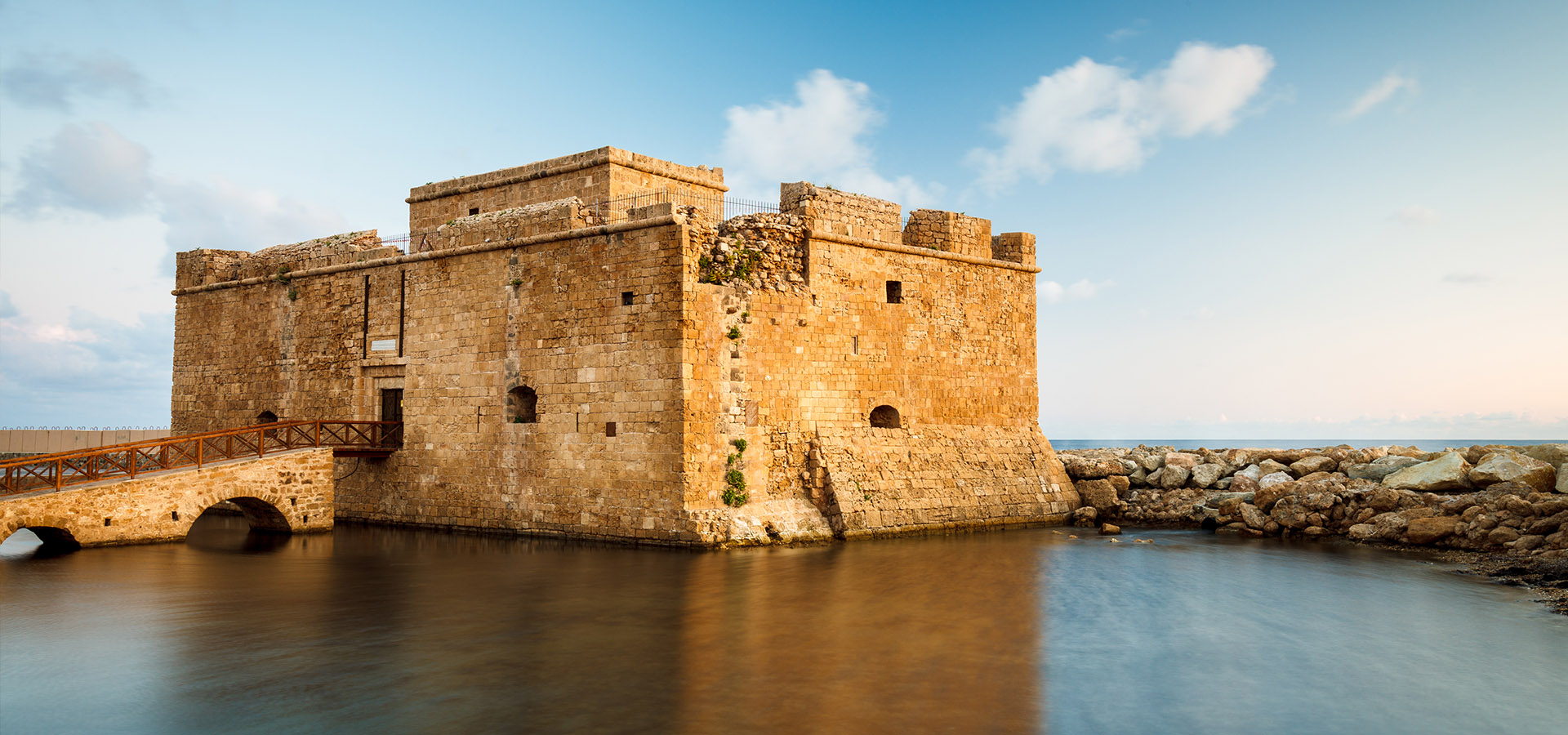WHY PAPHOS
Paphos in the south-west is a fast developing tourist resort and has the island’s second international airport. The economy of Paphos has rabidly developed soon after the Turkish invasion in 1974 and it mainly depends on tourism. Nowadays, the town has a remarkable tourist infrastructure with approximately 11,000 hotel rooms, and hundreds of restaurants, cafes and bars. Generally, it is estimated that Paphos receives more than 800,000 tourists every year.
During the last 15 years, the Municipality of Paphos has reinforced its relationship with Greece and other European countries by signing twinning agreements with other Municipalities, such as the Municipality of Kalamaria, the Municipality of Corfu, the Municipality of Lamia, the Municipality of Mytilene, the Municipality of Preveza and the Municipality of Anzio, an ancient city of Italy. The Municipality of Pafos has also developed its collaborations with other Municipalities, such as the Municipality of Tegea, the Municipality of Sofia and the Municipality of Sefton and it participates in many international organisations, as for example in the Union of Ancient Greek Mediterranean Ports, the Standing Conference of the Historic Towns of the Mediterranean, the COPPEM (Standing Committee for the Euro Mediterranean Partnership of the Local and Regional Authorities), the Les Rencontres (an Association of European Cities and Regions for Culture), the Europa Nostra, and many others.
The annual opera festival, which is organised by the company “Paphos Aphrodite Festival Cyprus Ltd” and takes place every September at the square of the medieval Castle in Paphos, is undoubtedly the most significant event of the town.
Paphos is well known for its stunning monuments and landmarks. Paphos castle is probably the most admired landmark of Pafos and is located in the Kato Pafos harbour. It was originally a Byzantine fort, but was rebuilt by the Lusignans. In 1570 the Venetians destroyed the castle, but during the Ottoman rule the castle was restored to its old glory, expanded and reinforced. Situated also near the Pafosharbour, are the remarkable preserved mosaic remains which can be seen in the Villa of Dionysos, Orpheus and Aion, and the Villa of Theseus, in the form of pavements. The Odeon Ancient Theatre, Tombs of the Kings, the church of Saint Solomoni which is a Christian catacomb, Aphrodite’s rock and baths, Saint Neophytos and Chrysoroyiatissa monasteries are also among the most admired landmarks of Paphos. Because of the legacy of the town’s remarkable history, the town of Paphos is included in the official UNESCO list of cultural and natural treasures of the world’s heritage.
Paphos won the title of the European Capital of Culture 2017 on 14 September of 2012. The title “European Capital of Culture” was designed to help bring the peoples of Europe closer together. This was the idea underlying its launch in June 1985 by the Council of Ministers of the European Union on the initiative of Melina Mercouri. Owing to the many visitors it has attracted, the title has since gone from strength to strength in Europe, and has a remarkable cultural and socio-economic impact. Among the advantages of this title are:
- There will be tourism developed, thus thousands of visitors from all over Europe will visit the city.
- The creation of modern infrastructure city will ameliorate the image and the aesthetics of the city and it will turn Paphos into a modern and developed city.
- The cultural events will be promoted in such a way that every citizen will feel that he/she participates in this effort.
- The bonds with other European countries will be enhanced.
- There will be a development of intercultural dialogue and European consciousness.
- The city will be better known in Europe, thus it will gain recognition from other countries as well.

